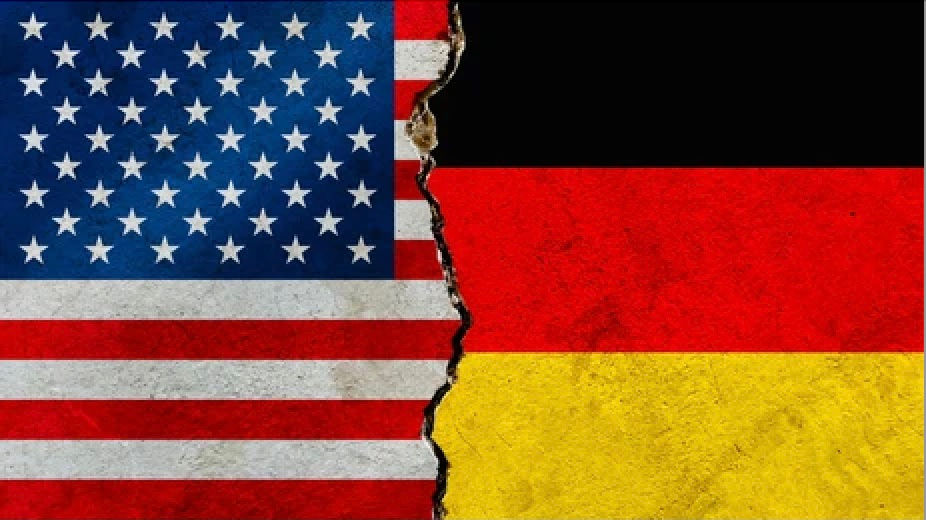U.S.A. vs. Germany
What was the conflict? We had WWII, but many other things were involved, like WWI and the Pork War. How? Let's dive in.
For this article, we will not go into the predecessor states of the German Empire. Additionally, for the time frame of 1949-1990, we will follow the Federal Republic of Germany (West Germany) and not the German Democratic Republic (East Germany).
Initially, the U.S. and Germany were friends. The predecessor to the modern German state, the Kingdom of Prussia, favored the American rebels during the American Revolution. Germany's small city-states and big countries supported the Union during the American Civil War. During the Franco-Prussian War, the American public favored the Prussians. When the German Empire finally unified, it imported large amounts of American farm products. Then, it all started to fall apart.
In 1880, ten European countries, including Germany, banned American pork. Washington retaliated by threatening an embargo on German beet sugar, which caused Germany to back down. In the Pacific, the U.S. and Germany had a dispute over the island chain of Samoa. America had a fueling station in the Pago Pago harbor, and Germany wanted an influence in Apia. The standoff killed ~135 people and only stopped due to the 1889 Apia cyclone. Then...World War One.
Initially, the U.S. was neutral in World War I when it started in 1914. However, America secretly supported Britain and the Allied Powers and provided some aid to them. This ended up with a German submarine sinking the British passenger liner RMS Lusitania on the basis that the ship carried ammunition and weaponry for soldiers on the battlefield. They were right, but what made this bad was that the sinking killed 128 American citizens on the ship. In addition, a few months earlier, Germany had sent a telegram to Mexico offering an alliance against the U.S. The U.K. had intercepted it, however, and sent it to America. These acts caused the U.S. to join WWI.
After America and the Allies won the war, they drew up a series of things Germany had to do. It had to accept full blame for the war and pay reparations, switch from a constitutional monarchy to a full democracy, and give up Saarland, a region industrially crucial to the German economy. These severe economic obstacles, paired with the Great Depression, caused Germany to go into a vast economic downfall. 40% of the working population was unemployed because so many businesses shut down. Adolf Hitler then seized the opportunity to rise to power. He promised the German people that he would fix all of the country's problems, and he started blaming the Jewish people for the issues. This eventually led to the infamous Holocaust. Hitler ran for president in 1932 but lost to Paul von Hindenburg, the incumbent. Hindenburg appointed him as chancellor, however. This political gain allowed Hitler and the Nazis to take over the German government, democratically even! After that, Germany started occupying all German-populated areas in Europe and started WWII.
Throughout the first part of WWII, the U.S. again refused to join the war. But on December 7, 1941, the Japanese Navy Air Service attacked Pearl Harbor, Hawaii, a prominent naval base. This caused the U.S. to enter the war. They ended up being very crucial to Germany's defeat, with two of their generals, Dwight D. Eisenhower and Omar Bradley leading the Normandy landings. Eventually, the Nazis were defeated, and Germany was split up into occupation zones controlled by the U.S., U.K., France, and the U.S.S.R. The same thing ended up happening to Berlin.

This point marks the end of German-American hostilities, for more than 4 years later, the British, French, and American occupation zones were combined to form the state of West Germany. The U.S. helped out with its reconstruction, and West Germany joined the North American Treaty Organization. And when West Berlin was blockaded by East German and Soviet forces, the U.S. and other allies airlifted food and supplies over the city.
When West Germany and East Germany reunited on October 3, 1990, it was more like East Germany was (peacefully and gratefully) annexed by West Germany, with some aspects of its economic policy and government structure getting included in West German society. This is why we chose to talk about West Germany and not East Germany.
Today, the U.S. is one of Germany's closest allies, with both countries being major contributors to NATO. In a report by the Pew Research Center in November 2023, 85% of American respondents and 77% of German respondents thought the U.S.-German relations were good. And even though the two countries' policies may be quite different at times, this good relationship is bound to continue for many years to come.
By Mihir Gupta
Power in Numbers
Programs
Locations
Volunteers

